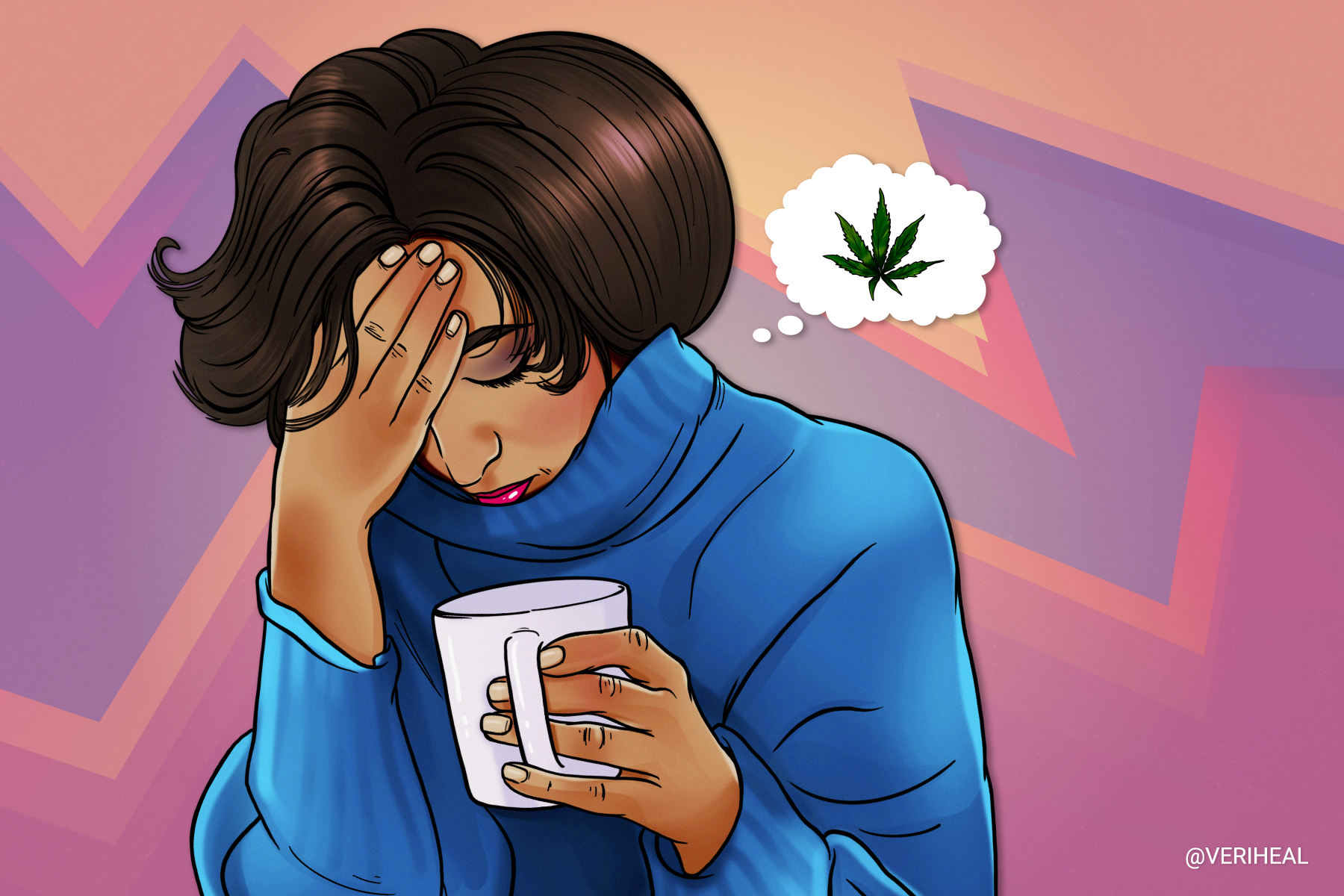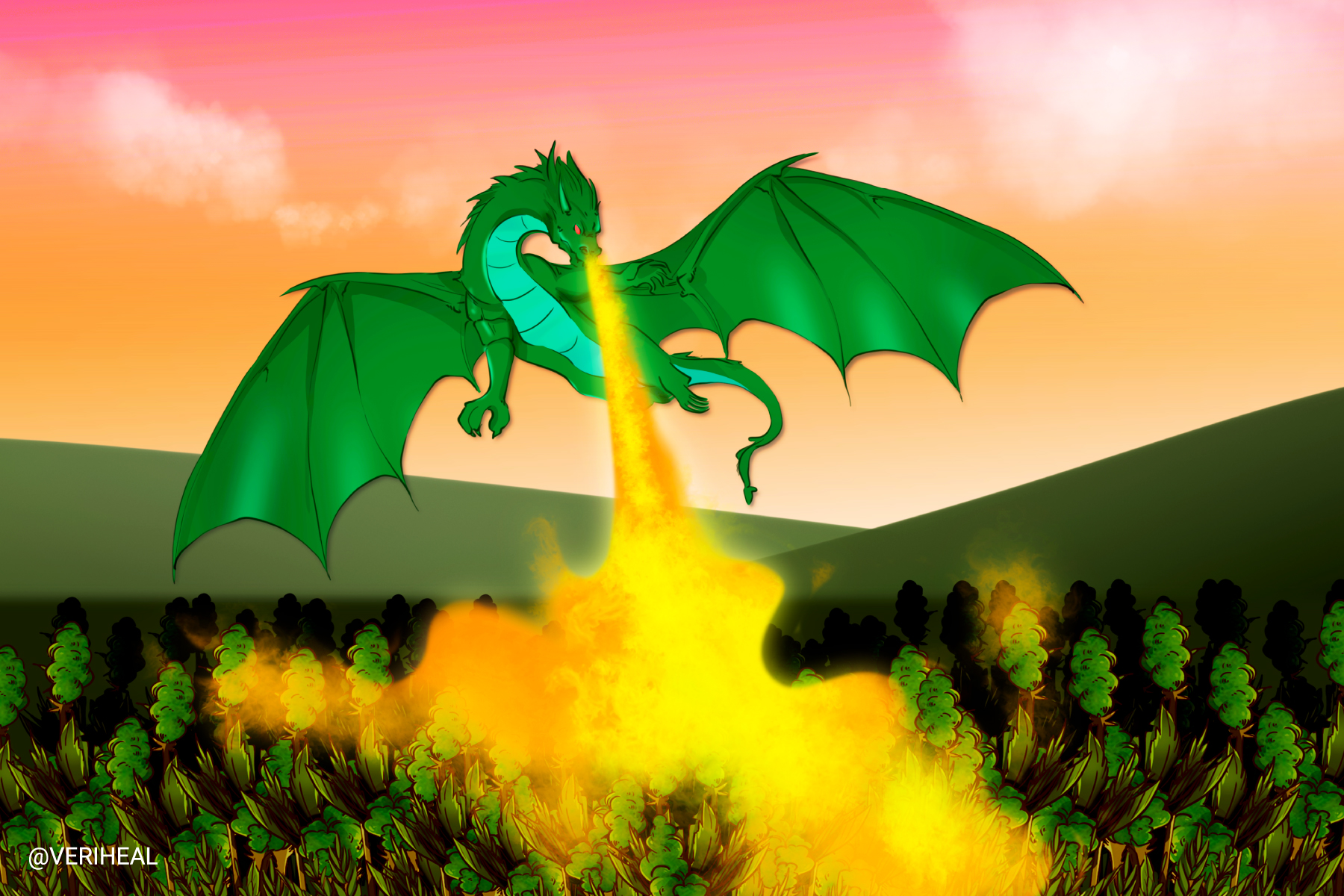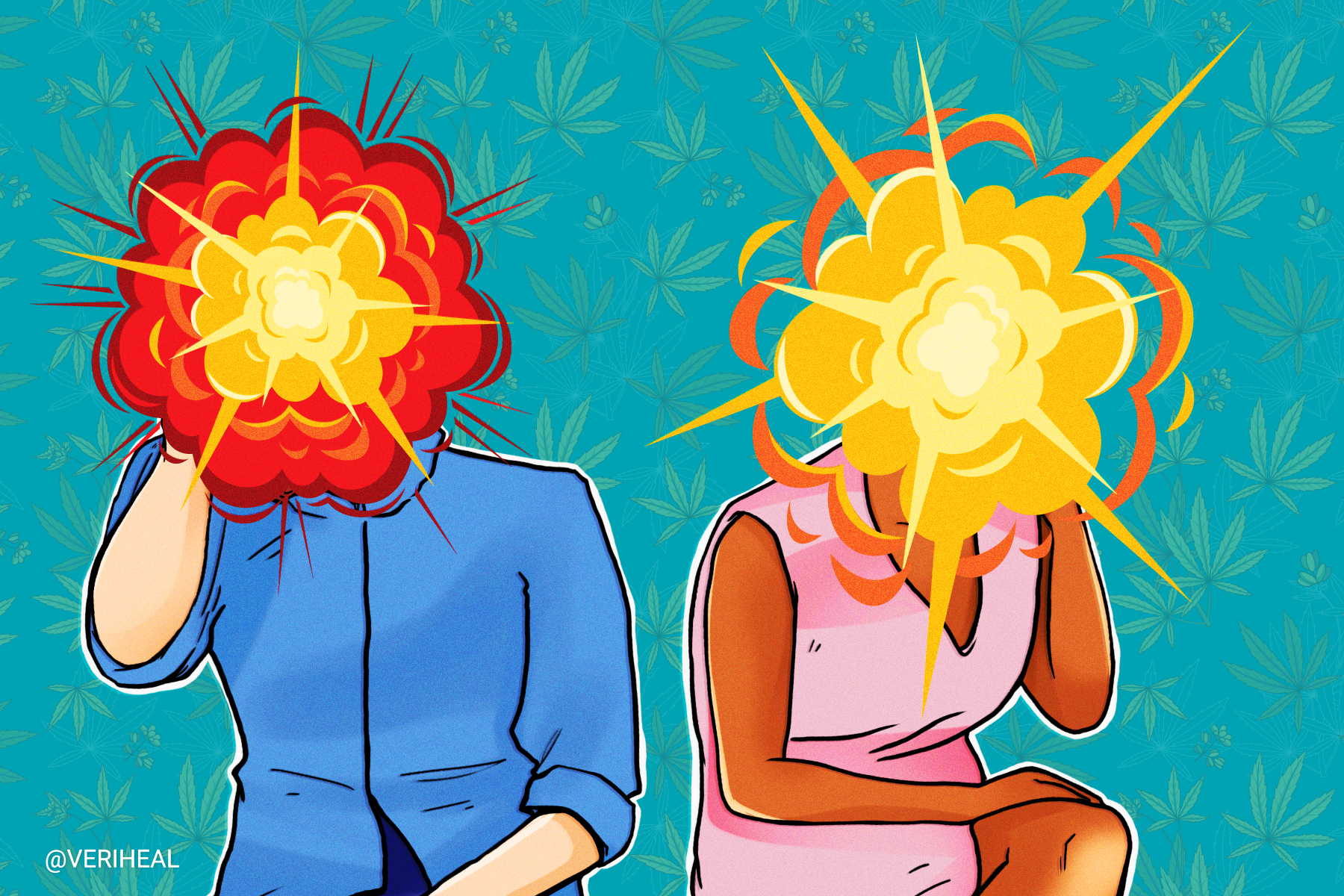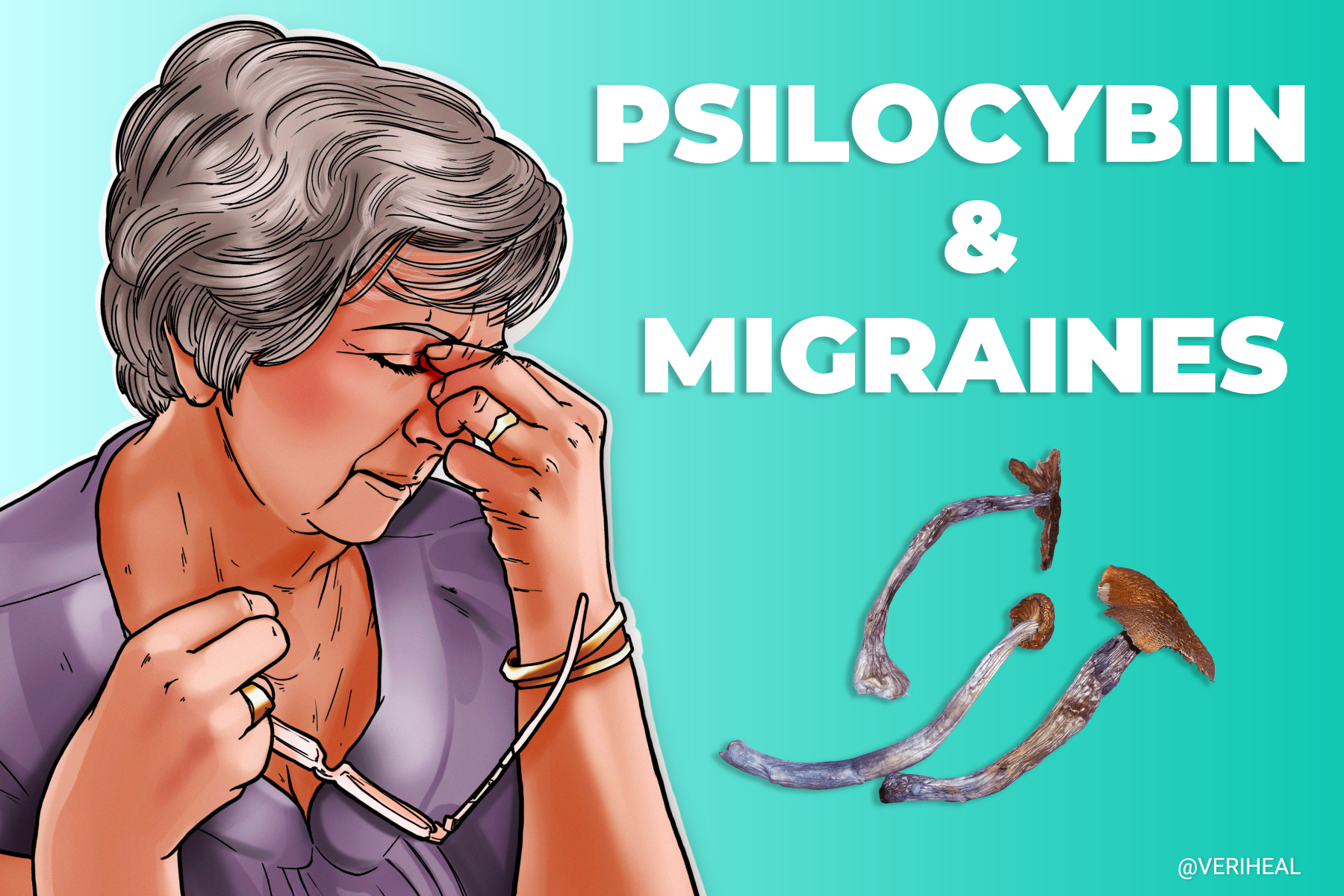Medical Cannabis Treatment for Headaches

- Headache Causes and Symptoms
- Headache Types and Treatments
- The Impact of Cannabinoids on Headaches
- Symptoms of Headaches: Nausea and Vomiting
- Symptoms of Headaches: Chronic Pain
Headaches are specific pains felt from mixed signals between the brain, blood vessels, and nearby nerves, reports WebMD, noting there are more than 150 types, each treated differently based on cause and symptoms (20). Some of the most notable include tension, migraine, cluster, chronic daily, sinus, and post-traumatic, rare and severely painful headaches include ice pick, spinal, and thunderclap.
The World Health Organization states that up to three-quarters of adults between 18-65 will have a headache at least once annually, stating “despite regional variations, headache disorders are a worldwide problem, affecting people of all ages, races, income levels and geographical areas (22).” One thing that is common among headaches is how medical cannabis may help relieve them for many people.
A 2016 University of Colorado study of 121 migraine sufferers that proved medical cannabis could treat headaches with up to 40% noting daily use of the plant alleviated pain and occurrence (17).
WebMD comments on the study, “The people used different types of marijuana, but they mostly inhaled it to ease a migraine in progress and found that it did help stop the pain. Edible products didn’t seem to work as well. The people who inhaled or smoked marijuana also said it was easier to control the amount of the drug they took in, and they had fewer negative reactions (3).”
Headache Causes and Symptoms
Common causes of headaches vary but include illness, stress, environment, and genetics (11). Lifestyle triggers are the most common but are often avoidable, and can include things like:
- Alcohol consumption, especially red wine
- Certain foods, including processed foods and meats with nitrites
- Sleeping problems or lack of sleep
- Poor posture or positioning
- Skipped meals and dehydration
- Daily stressors
- Bright lights
- High altitude
- Hot baths or weather
- Coughing
- Exercise and sexual activity
Headache symptoms include:
- Sharp, stabbing, or throbbing head pain, widespread or localized
- Nausea
- Vomiting
- Pain in the eyes
- Dizziness
- Pressure in the head
Headache Types and Treatments
There are hundreds of different kinds of headaches, but only a small percentage have known causes. The three primary headaches are tension headaches, migraine headaches (with or without aura), and cluster headaches.
Tension headaches are by far the most common and occur infrequently in most people. Tension headaches are characterized by a dull, squeezing tension on either side of the head or across the forehead like a tightening band, and vary from mild to moderate in pain level. They can be triggered by stress, fatigue, or problems with the muscles or joints of the neck and jaw, as well as the above listed lifestyle factors (14).
Migraines are often less frequent than tension headaches but on average migraine pain is more severe, disabling, and longer lasting (up to a couple of days). Migraine attacks are characterized by a throbbing and pulsing pain usually starting in the eye and temple area and then spreading to the back of the head. They can often be sensed before they come on strongly, and be accompanied by “auras”, which are accompanying sensory disturbances (visual, etc.) Auras can cue people to take their headache medicine before things get worse (12).
Cluster headaches are uncommon yet are also severe in pain level (13). Unlike migraine headaches which are significantly more likely to occur in women, cluster headaches are two to three times more likely to occur in men than in women (1).
The type of treatment depends on the form of headache. A tension headache typically calls for common, over-the-counter pain relievers including acetaminophen, aspirin, and ibuprofen. However, if tension headaches are more severe or frequent a doctor may prescribe a muscle relaxer or, according to Harvard Medical School, “ people with recurrent tension-type headaches can prevent attacks by taking a tricyclic antidepressant such as amitriptyline (Elavil, generic)(8).”
Migraine medications and treatments used to alleviate migraine symptoms vary based on a couple of different factors. Pain caused by a migraine attack can be treated with NSAIDs or a combination drug like Excedrin (acetaminophen, aspirin, and caffeine). However, depending on the migraine severity and when other therapies (NSAIDs) fail, triptans are often therapeutic choices recommended by doctors for migraine relief (10). These are also usually administered in the emergency room when migraines are strong enough, along with IV antiemetic medications. People with migraines take prophylactic (preventive) medicines like beta blockers, antidepressants, antiepileptics, or even Botox injections to reduce the frequency and intensity of migraines.
The treatment of cluster headaches is approached from two angles: prevention and immediate relief from an attack. To stop an ongoing attack oxygen therapy or the nasal spray sumatriptan may be prescribed by your doctor to alleviate severe pain. To prevent recurrent attacks, other pharmaceuticals may be prescribed by your doctor including verapamil, prednisone, or lithium carbonate (4).
Headaches, the ECS, and Cannabinoids
The endocannabinoid system (ECS) is an extensive and complex cell signaling system that is found throughout the central nervous system (CNS) and the body. It is responsible for regulating a wide range of essential functions in the body and brain to help maintain homeostasis such as memory, mood, pain perception, appetite, motor responses, sleep, fertility and more. Cannabis has been studied for its anti-inflammatory, analgesic (pain-relieving), and anti-emetic (vomiting prevention) properties.
As our understanding of cannabis and medical applications advances, it is becoming increasingly apparent that cannabinoid profile and terpenes present in a specific strain of cannabis flower are of greater importance than whether a strain is sativa or indica.
Phytocannabinoids such as cannabidiol (CBD) and delta-9 tetrahydrocannabinol (THC) which are found in the cannabis plant interact with endocannabinoids in the ECS. The two primary endocannabinoids that are relevant for pain relief are 2-arachidonoylglycerol, or 2-AG and anandamide. Both of these endocannabinoids play key roles in psychological health and relieving several forms of pain (9).
CBD has been studied for and has the strongest evidence to support its anti-inflammatory, anticonvulsive, and antioxidative properties, with some new evidence emerging in its role on pain management (3). THC on the other hand has been studied largely for its analgesic and anti-emetic effects (21). This explains in part why cannabinoid profile is important when choosing cannabis strains to treat specific conditions. Similarly, certain terpenes have been found to produce stronger analgesic effects. When choosing a strain of cannabis with your MMJ doctor or cannabis coach it’s important to account for these factors to determine which strain or products are most suitable for a specific condition or consumption preference.
In the past few years researchers have continued to explore cannabinoids and their analgesic potential, which has the potential to improve the quality of life through offering relief to patients with headache disorders.
The Impact of Cannabinoids on Headaches
The Journal of Pain also reports in 2019 how treating headaches and migraines with medical cannabis is effective. Study highlights include headache and migraine ratings lessened by up to 50%. Men reported more significant reductions in headaches after using cannabis than women, and evidence of overuse of medical cannabis for headaches was not apparent. (5)
“Use of cannabis to treat headache dates back hundreds to thousands of years, and is currently widespread among medical cannabis users,” reports the journal. Further evidence supporting medical cannabis for alleviating headache pain is likely to continue as more migraine sufferers seek relief from the plant properties.
The Association of Migraine Disorders details the personal story of a sufferer Michelle Tracy, who chronicled her medical cannabis journey in a 2018 report.
“My hope is that my story might help someone else articulate their own mixed feelings, while also showing how marijuana can be effective in treating chronic migraine disease,” Tracy writes, adding “At least two of my doctors actually voted to legalize marijuana recreationally in our state based on my explanation of how it had worked in my life as well as my anxieties around using a drug that was still federally illegal (19).”
A 2021 review of the current literature on medical cannabis, headaches, and migraines concluded that medical cannabis, “was effective in decreasing daily analgesic intake, dependence, and level of pain intensity. Some patients experienced a prolonged and persistent improvement in their health and well-being (both physically and mentally) after long-term use of medicinal cannabis. Overall, patients reported more positive effects rather than adverse effects with medical cannabis use (16).
Symptoms of Headaches: Nausea and Vomiting
A common symptom of headaches are nausea and vomiting. Cannabis has been known anecdotally for its anti-emetic (preventing vomitting) properties for centuries, with studies dating back to the 1970s that studied delta-9 tetrahydrocannabinol as an antiemetic for cancer patients receiving chemotherapy (7).
The anti-emetic and appetite-stimulating effects of cannabis have been studied in relation to other medical conditions such as HIV/AIDS. In the past several decades studies have continued and the available research supports that manipulating the ECS can help regulate and alleviate nausea and vomiting in humans and animals while increasing appetite (15). Despite these promising results, further research is needed to confirm these findings among patients with headache disorders that experience nausea and vomiting as a symptom of this disorder.
Symptoms of Headaches: Chronic Pain
Pain management is central to patients with frequent headaches. As mentioned above, depending on what type of headache you have, the medication that will help treat symptoms will vary.
Tension headaches in particular are often managed with over-the-counter pain killers such as aspirin, acetaminophen and ibuprofen. Taking painkillers repeatedly can ironically cause medication-overuse headaches (6), which occur when medications cease providing symptom relief and begin to become a source of headaches.
When patients attempt to increase the use of painkillers it ultimately perpetuates this cycle. Patients managing pain related to headaches should never take aspirin or ibuprofen consecutively for two weeks and seek local medical treatment. Additionally, long-term continuous use of these medications can cause other dangerous side-effects such as blood thinning (aspirin), gut lining (ibuprofen), as well as compromising organ function (ibuprofen and acetaminophen).
There is a growing body of evidence that has explored medical cannabis for its analgesic properties. Based on the available research, medical marijuana may provide pain relief for patients with headache disorders without the dangerous side effects and risks that long-term use of over the counter pain relievers have (18).
The continued legalization of cannabis and expansion of medical cannabis programs across the United States will continue to encourage large scale studies on medical cannabis’ potential to treat a variety of conditions.
If you experience migraine headaches, tension headaches or other types of headache disorders, talk to your doctor about medical cannabis to see if cannabis products may be a good option to include in your pain management plan.
Note: The content on this page is for informational purposes only and is not intended to be professional medical advice. Do not attempt to self-diagnose or prescribe treatment based on the information provided. Always consult a physician before making any decision on the treatment of a medical condition.
1. Allena, M., De Icco, R., Sances, G., Ahmad, L., Putortì, A., Pucci, E., Greco, R., & Tassorelli, C. (2019). Gender differences in the clinical presentation of Cluster Headache: A role for sexual hormones? Frontiers in Neurology, 10. https://pubmed.ncbi.nlm.nih.gov/31824403/
2. Atalay S, Jarocka-Karpowicz I, Skrzydlewska E. Antioxidative and Anti-Inflammatory Properties of Cannabidiol. Antioxidants (Basel). 2019 Dec 25;9(1):21. https://www.ncbi.nlm.nih.gov/pmc/articles/PMC7023045/#:~:text=Therefore%2C%20it%20has%20been%20suggested,of%20immune%20cells%20%5B66%5D
3. Bernstein, S. (2021). Medical marijuana for migraines: Can cannabis or CBD help? WebMD. Retrieved July 8, 2022, from https://www.webmd.com/migraines-headaches/under-counter-treatment-migraines
4. Cluster headaches. Johns Hopkins Medicine. (2021, August 8). Retrieved July 8, 2022, from https://www.hopkinsmedicine.org/health/conditions-and-diseases/headache/cluster-headaches
5. Cuttler, C., Spradlin, A., Cleveland, M. J., & Craft, R. M. (2020). Short- and long-term effects of cannabis on headache and Migraine. The Journal of Pain, 21(5-6), 722–730. https://www.jpain.org/article/S1526-5900(19)30848-X/fulltext
6. Fischer MA, Jan A. Medication-overuse Headache. [Updated 2022 May 1]. In: StatPearls [Internet]. Treasure Island (FL): StatPearls Publishing; 2022 Jan-. Available from: https://www.ncbi.nlm.nih.gov/books/NBK538150/
7. FRYTAK, S. T. E. P. H. E. N. (1979). Delta-9-tetrahydrocannabinol as an antiemetic for patients receiving cancer chemotherapy. Annals of Internal Medicine, 91(6), 825. https://www.acpjournals.org/doi/pdf/10.7326/0003-4819-91-6-825
8. Headache pain: When to worry, what to do – Harvard Health Publishing. Harvard Health. (2020, April 15). Retrieved July 8, 2022, from https://www.health.harvard.edu/pain/headache-when-to-worry-what-to-do
9. Hohmann, A. G., Suplita, R. L., Bolton, N. M., Neely, M. H., Fegley, D., Mangieri, R., Krey, J. F., Michael Walker, J., Holmes, P. V., Crystal, J. D., Duranti, A., Tontini, A., Mor, M., Tarzia, G., & Piomelli, D. (2005). An endocannabinoid mechanism for stress-induced analgesia. Nature, 435(7045), 1108–1112. https://pubmed.ncbi.nlm.nih.gov/15973410/
10. Lew C, Punnapuzha S. Migraine Medications. [Updated 2022 May 8]. In: StatPearls [Internet]. Treasure Island (FL): StatPearls Publishing; 2022 Jan-. Available from: https://www.ncbi.nlm.nih.gov/books/NBK553159/
11. Mayo Clinic Staff. (2020, June 3). Headache causes. Mayo Clinic. Retrieved July 8, 2022, from https://www.mayoclinic.org/symptoms/headache/basics/causes/sym-20050800
12. Mayo Clinic Staff. (2021, July 2). Migraine. Mayo Clinic. Retrieved July 8, 2022, from https://www.mayoclinic.org/diseases-conditions/migraine-headache/symptoms-causes/syc-20360201
13. Mayo Clinic Staff. (2021, July 24). Cluster headache. Mayo Clinic. Retrieved July 8, 2022, from https://www.mayoclinic.org/diseases-conditions/cluster-headache/symptoms-causes/syc-20352080
14. Mayo Clinic Staff. (2021, September 29). Tension headache. Mayo Clinic. Retrieved July 8, 2022, from https://www.mayoclinic.org/diseases-conditions/tension-headache/symptoms-causes/syc-20353977
15. Parker LA, Rock EM, Limebeer CL. Regulation of nausea and vomiting by cannabinoids. Br J Pharmacol. 2011 Aug;163(7):1411-22. https://www.ncbi.nlm.nih.gov/pmc/articles/PMC3165951/
16. Poudel S, Quinonez J, Choudhari J, Au ZT, Paesani S, Thiess AK, Ruxmohan S, Hosameddin M, Ferrer GF, Michel J. Medical Cannabis, Headaches, and Migraines: A Review of the Current Literature. Cureus. 2021 Aug 24;13(8):e17407. https://www.ncbi.nlm.nih.gov/pmc/articles/PMC8459575/#:~:text=Despite%20such%20side%20effects%2C%20patients,frequency%20and%20duration%20of%20migraines.&text=Several%20studies%20have%20reported%20preferred,treatment%20of%20migraines%20and%20headaches.
17. Rhyne, D. N., Anderson, S. L., Gedde, M., & Borgelt, L. M. (2016). Effects of medical marijuana on migraine headache frequency in an adult population. Pharmacotherapy: The Journal of Human Pharmacology and Drug Therapy, 36(5), 505–510. https://accpjournals.onlinelibrary.wiley.com/doi/10.1002/phar.1673
18. Russo EB. Cannabinoids in the management of difficult to treat pain. Ther Clin Risk Manag. 2008 Feb;4(1):245-59. https://www.ncbi.nlm.nih.gov/pmc/articles/PMC2503660/
19. Tracy, M. (2019, April 5). Medical marijuana and migraine – is it for you? Association of Migraine Disorders. Retrieved July 8, 2022, from https://www.migrainedisorders.org/medical-marijuana-and-migraine/
20. WebMD. (n.d.). Headaches – types, causes, symptoms, diagnosis, treatment. WebMD. Retrieved July 8, 2022, from https://www.webmd.com/migraines-headaches/migraines-headaches-basics
21. Whiting, P. F., Wolff, R. F., Deshpande, S., Di Nisio, M., Duffy, S., Hernandez, A. V., Keurentjes, J. C., Lang, S., Misso, K., Ryder, S., Schmidlkofer, S., Westwood, M., & Kleijnen, J. (2015). Cannabinoids for medical use. JAMA, 313(24), 2456. https://jamanetwork.com/journals/jama/fullarticle/2338251
22. World Health Organization. (2016, April 8). Headache disorders. World Health Organization. Retrieved July 8, 2022, from https://www.who.int/en/news-room/fact-sheets/detail/headache-disorders









